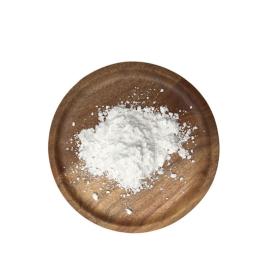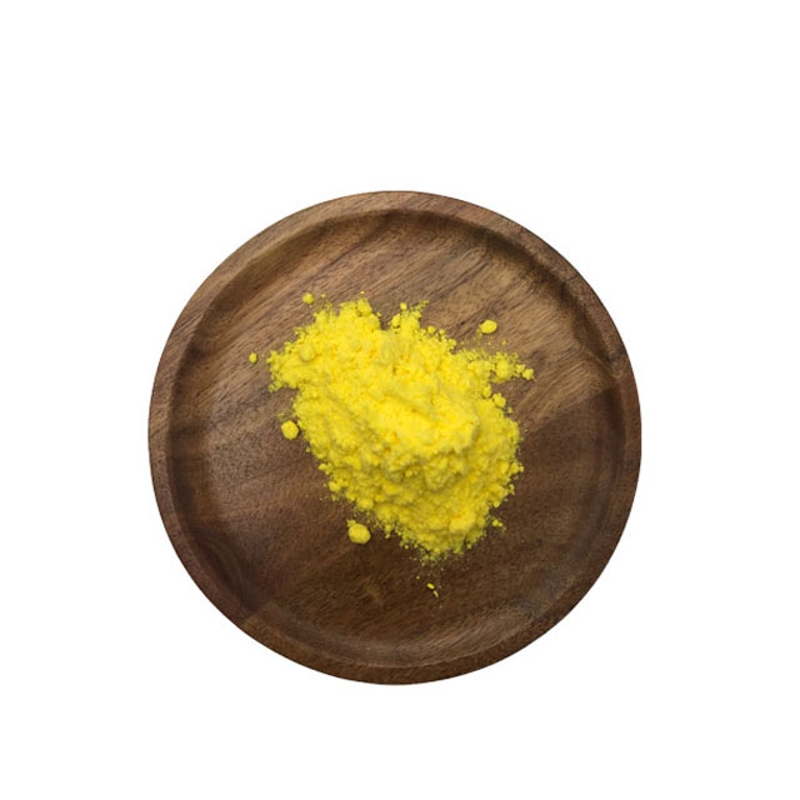-
Categories
-
Pharmaceutical Intermediates
-
Active Pharmaceutical Ingredients
-
Food Additives
- Industrial Coatings
- Agrochemicals
- Dyes and Pigments
- Surfactant
- Flavors and Fragrances
- Chemical Reagents
- Catalyst and Auxiliary
- Natural Products
- Inorganic Chemistry
-
Organic Chemistry
-
Biochemical Engineering
- Analytical Chemistry
- Cosmetic Ingredient
-
Pharmaceutical Intermediates
Promotion
ECHEMI Mall
Wholesale
Weekly Price
Exhibition
News
-
Trade Service
*Only for medical professionals to read and refer to those things about MET targets! Although lung cancer is still the tumor with the highest fatality rate in the world, the emergence of targeted therapy in non-small cell lung cancer (NSCLC) patients with certain specific gene mutations has greatly improved the prognosis of patients.
Treatment has gradually replaced traditional chemotherapy and has become the standard treatment plan for advanced patients
.
Epidermal growth factor receptor (EGFR) gene mutation and anaplastic lymphoma kinase (ALK) gene fusion are the two most important tumor driver genes in NSCLC patients.
Increased and overexpression is considered to be the next important potential therapeutic target for NSCLC
.
What should we know about MET targets? This article takes you to find out! MET gene and its carcinogenic effect ▌ What is MET gene? The MET gene is located on the long arm of human chromosome 7 (7q21-31)
.
The protein encoded by the MET gene is c-MET, which is a transmembrane receptor with autonomous phosphorylation
.
The c-MET pathway is involved in many cell functions, including cell proliferation, cell growth, survival, apoptosis, and epithelial-mesenchymal transition (EMT)
.
The normal expression of c-MET pathway promotes tissue differentiation and repair, and the abnormal expression promotes tumor cell proliferation and metastasis
.
Abnormal activation of c-MET pathway mainly includes three types: MET14 exon skipping mutation, MET amplification and MET protein overexpression [1,2]
.
Among these MET gene abnormalities, there are already approved indications for drugs targeting MET14 exon skipping mutations
.
▌ The molecular mechanism of MET14 exon jumping mutation is a transmembrane tyrosine kinase receptor.
After MET binds to the ligand hepatocyte growth factor (HGF), it dimerizes and causes multiple tyrosine residues in the cell.
Phosphorylation of bases activates a series of downstream signaling pathways, including Ras-MAPK, P13K-Akt, etc.
, and then exerts its effects on promoting cell proliferation, growth, migration and angiogenesis
.
Like other tyrosine kinase receptors, MET is degraded by the E3 ubiquitin ligase c-Cbl
.
The membrane-proximal domain encoded by exon 14 of MET is the key negative regulatory region of MET.
It contains a caspase cleavage sequence and an E3 ubiquitin ligase c-Cbl tyrosine binding site (Y1003), which participates in MET.
Ubiquitination and degradation of proteins
.
Mutations in the splicing donor and acceptor sites of MET14 exon will cause exon skipping, and deletion of the membrane-proximal domain containing the E3 ubiquitin ligase c-Cbl, which in turn reduces the ubiquitination barrier and degradation rate of the MET protein.
Increase the stability of MET, cause the continuous activation of downstream signals, and eventually become a carcinogen
.
There are various forms of jumping mutations in exon MET14 reported in current research, including point mutations or deletion mutations in the splicing region of exon MET14, and a very small number of Y1003 point mutations (Figure 1) [3]
.
Figure 1.
The molecular mechanism of MET14 exon jump mutation How to detect MET mutation? MET mutations are usually identified by next-generation sequencing (NGS), but in different tumor types, the incidence of MET mutations is different: in lung cancer, MET is found in only about 6% of NSCLC patients and 3% of lung squamous cell carcinoma patients Mutation
.
In gynecological tumors, the incidence of MET mutations is slightly higher.
MET mutations are found in approximately 15%-51% of breast cancers and 7.
4% of ovarian cancers
.
There are many methods currently used to detect jumping mutations in exon 14 of MET, such as DNA-based NGS, Sanger sequencing of exon 14 and its introns on both sides, reverse transcription-polymerase chain reaction (RT-PCR) ) and RNA-based detection NGS
.
Compared with Sanger sequencing, RT-PCR and NGS detection have higher sensitivity
.
In addition, the FoundationOne NGS analysis in the United States and the Archer MET analysis in Japan have recently been approved as auxiliary diagnostic methods for the detection of skipping mutations in exon 14 of MET
.
With more use of NGS based on tumor tissue and blood, patients with MET14 exon skipping mutations are more and more likely to be detected after a comprehensive sequence analysis [1,4]
.
The amplification of the MET gene can be identified by fluorescence in situ hybridization (FISH), reverse transcriptase-PCR or NGS detection
.
MET amplification is found in approximately 8% of breast cancers, and it is also found that MET amplification is associated with triple-negative breast cancer [1]
.
MET gene rearrangement can be identified by NGS.
Although MET gene rearrangement is not common in cancer, a new fusion of MET gene has been found in lung cancer.
The total incidence of MET fusion in lung adenocarcinoma is reported to be 0.
5% (Figure 2 )[1]
.
Figure 2.
Detected MET gene mutations.
How should patients with NSCLC with skipping mutations in MET14 exon be treated? At present, the main targeted drugs that act on the jumping mutation of MET14 exon are monoclonal antibodies and small molecule tyrosine kinase inhibitors (TKI)
.
Among them, MET-TKI has achieved good anti-tumor effects in NSCLC patients with skipping mutations in MET14 exon
.
Studies have found that free c-MET can adopt a unique self-inhibitory conformation, and its activation loop can be locked to the ATP triphosphate binding site through the salt bridge between D1228 and K1110
.
According to the different structure combination, it can be divided into 3 types (I, II, III)
.
Corresponding MET inhibitors have been developed for these three types: Type I inhibitors can be subdivided into Ia and Ib, which are ATP-competitive and can bind to c-MET's unique self-inhibition through the characteristic interaction with Y1230 Conformation: Type Ⅱ inhibitors are also ATP-competitive and can bind to the binding site of ATP adenine; Type Ⅲ inhibitors have different binding sites from the above inhibitors.
There is no research on the treatment of tumors with type Ⅲ inhibitors.
[4]
.
MET-TKI is a selective competitive inhibitor of adenosine triphosphate (ATP), which inhibits the phosphorylation of downstream related kinases by inhibiting the activity of MET, so that downstream signal transduction is arrested, thereby regulating tumor cell proliferation, metastasis and angiogenesis
.
Many clinical cases reported that patients with MET14 exon skip mutation have achieved objective remission after TKI treatment.
Among them, Syvotinib has been approved for marketing in China this year
.
Saivotinib is a new type of small molecule selective type Ib MET-TKI
.
The latest efficacy and safety results of a phase II clinical trial (NCT02897479) showed that out of 87 NSCLC patients with a confirmed MET14 exon skipping mutation, 70 received treatment with Sevotinib, with a median age of 68.
7 years.
Adenocarcinoma accounted for 57.
1%, and pulmonary sarcomatoid carcinoma (PSC) accounted for 35.
7%
.
Among 61 patients with evaluable efficacy, the objective response rate (ORR) was 47.
5%, the disease control rate was 93.
4%, and the median progression-free survival (PFS) was 6.
8 months
.
The adverse reactions with an incidence of ≥20% were peripheral edema, nausea, elevated AST/ALT, vomiting and hypoproteinemia; the incidence of adverse reactions of grade ≥3 was 41.
4%; the incidence of adverse reactions leading to the termination of treatment was 14.
3% , Of which liver damage and allergic reactions each accounted for 2.
9%
.
In addition, the results of this study also show that Saivotinib can penetrate the blood-brain barrier and is also effective for patients with brain metastases [3]
.
With the in-depth development of research on MET targets, it is expected that drugs targeting MET targets will show up in the country in the future, bringing more benefits to cancer patients! References: [1] Malik R, Mambetsariev I, Fricke J, et al.
MET receptor in oncology From biomarker to therapeutic target[J].
Adv Cancer Res.
2020;147259-301.
[2]Huang C,Zou Q, Liu H,et al.
Management of Non-small Cell Lung Cancer Patients with MET Exon 14 Skipping Mutations[J].
Curr Treat Options Oncol.
2020 Apr 18;21(4)33.
[3],you.
MET 14 Research progress of exon skipping mutation in non-small cell lung cancer[J].
Chinese Journal of Lung Cancer.
2018;7(21)553-559.
[4]Zhou Ye,Yu Yan.
MET14 exon skipping mutation and non-small cell lung cancer Cell lung cancer[J].
Journal of International Oncology.
2021;06:366-369.
*This article is only used to provide scientific information to medical professionals and does not represent the views of this platform
Treatment has gradually replaced traditional chemotherapy and has become the standard treatment plan for advanced patients
.
Epidermal growth factor receptor (EGFR) gene mutation and anaplastic lymphoma kinase (ALK) gene fusion are the two most important tumor driver genes in NSCLC patients.
Increased and overexpression is considered to be the next important potential therapeutic target for NSCLC
.
What should we know about MET targets? This article takes you to find out! MET gene and its carcinogenic effect ▌ What is MET gene? The MET gene is located on the long arm of human chromosome 7 (7q21-31)
.
The protein encoded by the MET gene is c-MET, which is a transmembrane receptor with autonomous phosphorylation
.
The c-MET pathway is involved in many cell functions, including cell proliferation, cell growth, survival, apoptosis, and epithelial-mesenchymal transition (EMT)
.
The normal expression of c-MET pathway promotes tissue differentiation and repair, and the abnormal expression promotes tumor cell proliferation and metastasis
.
Abnormal activation of c-MET pathway mainly includes three types: MET14 exon skipping mutation, MET amplification and MET protein overexpression [1,2]
.
Among these MET gene abnormalities, there are already approved indications for drugs targeting MET14 exon skipping mutations
.
▌ The molecular mechanism of MET14 exon jumping mutation is a transmembrane tyrosine kinase receptor.
After MET binds to the ligand hepatocyte growth factor (HGF), it dimerizes and causes multiple tyrosine residues in the cell.
Phosphorylation of bases activates a series of downstream signaling pathways, including Ras-MAPK, P13K-Akt, etc.
, and then exerts its effects on promoting cell proliferation, growth, migration and angiogenesis
.
Like other tyrosine kinase receptors, MET is degraded by the E3 ubiquitin ligase c-Cbl
.
The membrane-proximal domain encoded by exon 14 of MET is the key negative regulatory region of MET.
It contains a caspase cleavage sequence and an E3 ubiquitin ligase c-Cbl tyrosine binding site (Y1003), which participates in MET.
Ubiquitination and degradation of proteins
.
Mutations in the splicing donor and acceptor sites of MET14 exon will cause exon skipping, and deletion of the membrane-proximal domain containing the E3 ubiquitin ligase c-Cbl, which in turn reduces the ubiquitination barrier and degradation rate of the MET protein.
Increase the stability of MET, cause the continuous activation of downstream signals, and eventually become a carcinogen
.
There are various forms of jumping mutations in exon MET14 reported in current research, including point mutations or deletion mutations in the splicing region of exon MET14, and a very small number of Y1003 point mutations (Figure 1) [3]
.
Figure 1.
The molecular mechanism of MET14 exon jump mutation How to detect MET mutation? MET mutations are usually identified by next-generation sequencing (NGS), but in different tumor types, the incidence of MET mutations is different: in lung cancer, MET is found in only about 6% of NSCLC patients and 3% of lung squamous cell carcinoma patients Mutation
.
In gynecological tumors, the incidence of MET mutations is slightly higher.
MET mutations are found in approximately 15%-51% of breast cancers and 7.
4% of ovarian cancers
.
There are many methods currently used to detect jumping mutations in exon 14 of MET, such as DNA-based NGS, Sanger sequencing of exon 14 and its introns on both sides, reverse transcription-polymerase chain reaction (RT-PCR) ) and RNA-based detection NGS
.
Compared with Sanger sequencing, RT-PCR and NGS detection have higher sensitivity
.
In addition, the FoundationOne NGS analysis in the United States and the Archer MET analysis in Japan have recently been approved as auxiliary diagnostic methods for the detection of skipping mutations in exon 14 of MET
.
With more use of NGS based on tumor tissue and blood, patients with MET14 exon skipping mutations are more and more likely to be detected after a comprehensive sequence analysis [1,4]
.
The amplification of the MET gene can be identified by fluorescence in situ hybridization (FISH), reverse transcriptase-PCR or NGS detection
.
MET amplification is found in approximately 8% of breast cancers, and it is also found that MET amplification is associated with triple-negative breast cancer [1]
.
MET gene rearrangement can be identified by NGS.
Although MET gene rearrangement is not common in cancer, a new fusion of MET gene has been found in lung cancer.
The total incidence of MET fusion in lung adenocarcinoma is reported to be 0.
5% (Figure 2 )[1]
.
Figure 2.
Detected MET gene mutations.
How should patients with NSCLC with skipping mutations in MET14 exon be treated? At present, the main targeted drugs that act on the jumping mutation of MET14 exon are monoclonal antibodies and small molecule tyrosine kinase inhibitors (TKI)
.
Among them, MET-TKI has achieved good anti-tumor effects in NSCLC patients with skipping mutations in MET14 exon
.
Studies have found that free c-MET can adopt a unique self-inhibitory conformation, and its activation loop can be locked to the ATP triphosphate binding site through the salt bridge between D1228 and K1110
.
According to the different structure combination, it can be divided into 3 types (I, II, III)
.
Corresponding MET inhibitors have been developed for these three types: Type I inhibitors can be subdivided into Ia and Ib, which are ATP-competitive and can bind to c-MET's unique self-inhibition through the characteristic interaction with Y1230 Conformation: Type Ⅱ inhibitors are also ATP-competitive and can bind to the binding site of ATP adenine; Type Ⅲ inhibitors have different binding sites from the above inhibitors.
There is no research on the treatment of tumors with type Ⅲ inhibitors.
[4]
.
MET-TKI is a selective competitive inhibitor of adenosine triphosphate (ATP), which inhibits the phosphorylation of downstream related kinases by inhibiting the activity of MET, so that downstream signal transduction is arrested, thereby regulating tumor cell proliferation, metastasis and angiogenesis
.
Many clinical cases reported that patients with MET14 exon skip mutation have achieved objective remission after TKI treatment.
Among them, Syvotinib has been approved for marketing in China this year
.
Saivotinib is a new type of small molecule selective type Ib MET-TKI
.
The latest efficacy and safety results of a phase II clinical trial (NCT02897479) showed that out of 87 NSCLC patients with a confirmed MET14 exon skipping mutation, 70 received treatment with Sevotinib, with a median age of 68.
7 years.
Adenocarcinoma accounted for 57.
1%, and pulmonary sarcomatoid carcinoma (PSC) accounted for 35.
7%
.
Among 61 patients with evaluable efficacy, the objective response rate (ORR) was 47.
5%, the disease control rate was 93.
4%, and the median progression-free survival (PFS) was 6.
8 months
.
The adverse reactions with an incidence of ≥20% were peripheral edema, nausea, elevated AST/ALT, vomiting and hypoproteinemia; the incidence of adverse reactions of grade ≥3 was 41.
4%; the incidence of adverse reactions leading to the termination of treatment was 14.
3% , Of which liver damage and allergic reactions each accounted for 2.
9%
.
In addition, the results of this study also show that Saivotinib can penetrate the blood-brain barrier and is also effective for patients with brain metastases [3]
.
With the in-depth development of research on MET targets, it is expected that drugs targeting MET targets will show up in the country in the future, bringing more benefits to cancer patients! References: [1] Malik R, Mambetsariev I, Fricke J, et al.
MET receptor in oncology From biomarker to therapeutic target[J].
Adv Cancer Res.
2020;147259-301.
[2]Huang C,Zou Q, Liu H,et al.
Management of Non-small Cell Lung Cancer Patients with MET Exon 14 Skipping Mutations[J].
Curr Treat Options Oncol.
2020 Apr 18;21(4)33.
[3],you.
MET 14 Research progress of exon skipping mutation in non-small cell lung cancer[J].
Chinese Journal of Lung Cancer.
2018;7(21)553-559.
[4]Zhou Ye,Yu Yan.
MET14 exon skipping mutation and non-small cell lung cancer Cell lung cancer[J].
Journal of International Oncology.
2021;06:366-369.
*This article is only used to provide scientific information to medical professionals and does not represent the views of this platform







